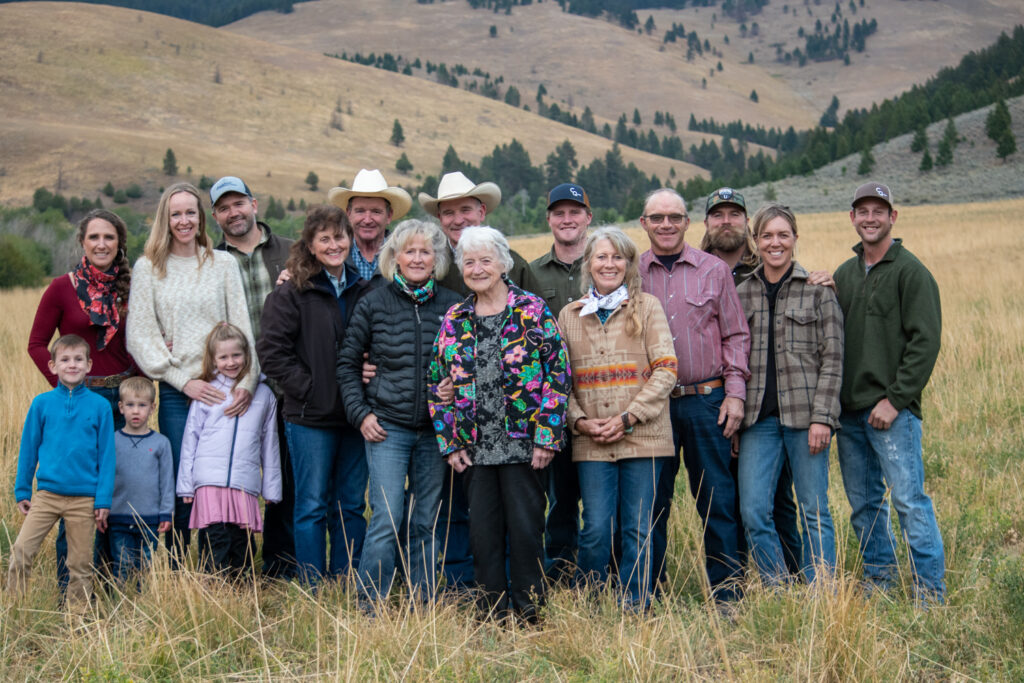By The Mannix Family
Large landscapes hold a multitude of values that often seem to be conflicting and can be managed by many different entities across a patchwork of man-made boundaries. Wildlife and plant communities don’t follow boundaries designated by ownership. Partnership and collaboration across ownership and management boundaries create continuity and resilience across these large tracts of land.
While controversial, prescribed fire is a management tool that can have dramatic effects on landscapes. Our family ranches in the Blackfoot River Valley and has been using small controlled burns as a management tool to build resiliency in grasslands since the mid-1980s. While burning was not commonplace at the time, we knew the land had evolved with sporadic fire and that science supported its role in shaping ecosystems. These small burns were limited due to lack of knowledge regarding fire ecology, fear of liability, and lack of resources such as time, labor, money, and equipment. This in turn, greatly limited our impact on the landscape.

In 2019, the Lincoln Ranger District of the US Forest Service (USFS) approached the Mannix family about including a small portion of our private land in their prescribed burn because it made the most sense topographically. The family agreed and asked to include a much larger portion of private ground. Despite added work and complexity, the USFS agreed and included us in the planning process. In addition to having us at the table, that portion of the ranch included two conservation easement holders (US Fish and Wildlife Service and the State of MT) and the Bureau of Land Management (BLM). Between all of these entities, there was a long list of values and considerations: reducing fuel load, decreasing conifer encroachment, decreasing sagebrush domination, increasing native grasses and forbs, allowing for adequate ground nesting bird habitat, and increasing grazing for both cattle and wildlife. The process of bringing all of those people to the table allowed them to look at the shared values of a much larger, more intact landscape than any one entity could have managed alone.
By the end of the planning process, the easement holders agreed to the burn given certain stipulations, like working to burn in a mosaic pattern that would allow adequate sagebrush habitat for ground nesting birds and other wildlife. The USFS prepped the ground and monitored for burn windows. The ranch allowed the pasture to rest from grazing to build more fuel to carry fire. In the spring of 2021, the first burn was completed and each year for 2 following years a section of ground was burned. By the end of 2023, the collaboration led to burning approximately 1,450 acres of private land and 1,100 acres belonging to the BLM and USFS.
In the ranch’s experience with fire over the last 30 years, we have seen an increase in the native grass and forb populations through management of sage and conifer. We have found that once the canopy cover of the sagebrush starts rising above 30%, it starts impacting the productivity of the grasslands for both cattle and wild ungulates. The effects of a single burn have lasted 20-25 years and have increased the vibrancy and competitiveness of native grasses and forbs. Our goal is that with improvements in water and fencing infrastructure and changes in planned grazing, we can continue to extend this window further while continuing to increase biological diversity and resilience.
While the family has been working with this practice of controlled burning for years, the knowledge of fire ecology and the resources provided by the USFS and the Lincoln Ranger District in particular, allowed us to have a much more substantial impact on the landscape than we would have been able to do independently without as much fear of liability. We are incredibly grateful for their willingness to share that knowledge and those resources with us. It is our hope that through collaborations like this, and those being led by organizations like the Blackfoot Challenge, we can continue to better steward these landscapes. We would like to see a community and a culture where private landowners, non-profits, conservation agencies, and state and federal land managers can work together to deeply understand and steward these large intact landscapes.
